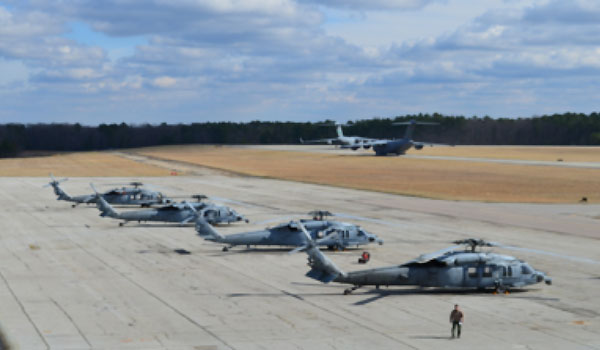
By Mr. Greg Alexander / Aviation and Safety Division, Army National Guard Bureau: The Army National Guard has over 47 Airfields (AAF) and Heliports (AHP) located throughout the lower 48 States and in Alaska. With the exception of a few, most ARNG aviation units and aircraft are not based at these airfields; they are based at metropolitan airports. Therefore, ARNG airfields are training sites where Army National Guard units and aviators go to conduct specialized training.
These airfields and training sites are open to all services and Government agencies, and can also support other training requirements as approved. Among the list of airfields and heliports, seven have manned Air Traffic Control (ATC) Facilities, and seven have an instrumented approach. Among the 12 airfields, seven are capable of landing C-17/C-130, three have improved UAS landing strips, and three have a C-130/C-17 assault strip.
These airfields provide a training environment that can accommodate small to large aviation unit training packages, and have also provided Air Traffic Control training and certification of individual and units prior to deployment.

Figure 1: USN and USAF Aviation Support to SBT
Blackstone AAF is a Joint Use (Military/Civilian) airfield managed and maintained by Ft. Pickett and the VAARNG. The airfield provides ATC tower services and has Class D airspace. Aviation customers utilizing Blackstone AAF, include military, civilian, transient, and ground training units. In addition to Air Traffic Services (ATS), what Blackstone AAF delivers is aviation training opportunities to Aviators and Air Traffic Controllers from all services – Army, USAF, USMC, USN, USCG, and even the Civil Air Patrol School.
During the high OPTEMPO deployments to Afghanistan and Iraq, Blackstone Airfield provided Air Traffic Services proficiency training to ARNG, USN, and USMC personnel prior to unit deployment. In all, over 16 controllers from all branches received technical proficiency training and certification, while an additional 14 controller honed their skills prior for deployment.
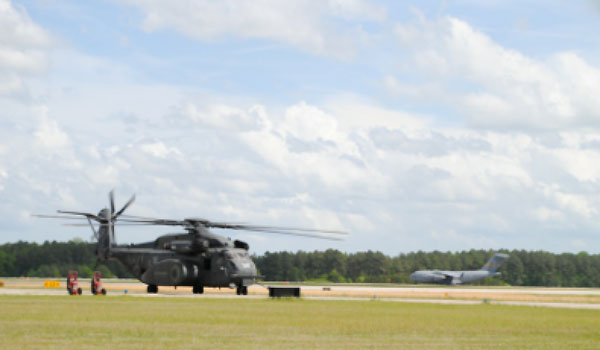
Figure 2: USN & USAF in support of SBT at Blackstone AAF
For over four years, Blackstone AAF hosted Exercise South Bound Trooper (SBT), a joint training event executed by Canadian, British, Australian and US troops. These exercises were supported by USAF, USN and ARNG Aviation assets, as well as an Army MASH unit from Ft Bragg, NC. This training event afforded the Florida Army National Guard (FLARNG) Airfield Operations Battalion (AOB) pre-deployment training when they were invited to participate, and manage, an airfield in preparation for deployment to Iraq.

Figure 3: USAF providing movement training opportunity to 183d Training Institute – MOS 88M
The unit deployed their ATNAVICS Radar, the Tactical Airspace Information System (TAIS) into the Airfield Management Cell, managed Blackstone’s airspace, and deployed the ATC TAC Team in support of infantry and artillery air assault missions. FLARNG personnel also worked from the airfield ATC tower. As best stated by the FL Guardsmen in their AAR, this was the best AT ever! The unit decided to devote future Annual Training events support of this exercise.
Ft Pickett and Blackstone customers include the Virginia State Police, FBI, Diplomatic Security Service, Defense Threat Reduction Agency, NASA, Air Force Research Laboratory, and USMC War fighting Laboratory, NASA testing, and the Navy Special Weapons Group.
During one eight weeks training event involving four C-17 commands, two Navy commands, two Army National Guard commands, Navy Air Traffic Controllers, Charleston Firefighters, and Fort Pickett Firefighters, a total of 197 C-17 sorties were scheduled, nearly eleven thousand movements during day and night operations, over 1,320 ATC training hours, over 1,300 CFR stand-by hours were recorded; there were only five noise complaints. However, five FAA Control Tower Operator certificates were issued. At Blackstone AAF and Ft Pickett VA, it is all about training.
Bryant Army Airfield (BAAF) is operated by the Alaska Army National Guard (AKARNG), and provides Air Traffic Services support to all aviation activities in accomplishing State, Federal, and Joint missions for Homeland Defense Security (HLD) and wartime operations. BAAF is located on Joint Base Elmendorf/Richardson (JBER) in Anchorage Alaska, and is home to the 207th Aviation.
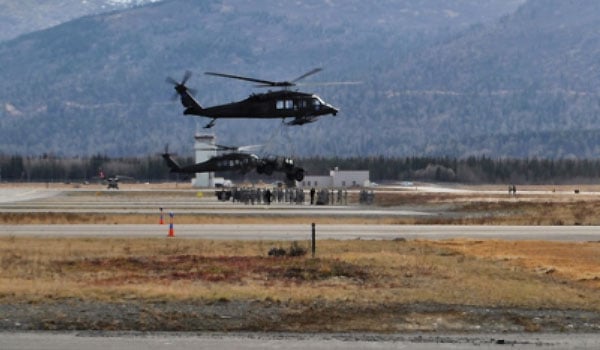
Figure 7: AKARNG supports 25ID Sling Load Training at BAAF, AK
Bryant AAF is the only location within the State of Alaska providing aircraft maintenance support for the AKARNG, it also provides aviation support to 4th BDE (Airborne) 25th Infantry Division’s airborne operations, pathfinder, and other small unit training. In Figure 7, Bryant AAF provides a training platform where members of the 25th Infantry Division practice specialized training, with aviation support provided by the Alaska ARNG stationed at Bryant AAF.
Himsel AAF, at Camp Atterbury IN, provides ATC Tower and advisories services to aircraft operating within the confines of the reservation’s restricted airspace. Camp Atterbury is a Mobilization Station for the National Guard, U.S. Army Reserve, and serves as a training site for both individuals and units from all branches of service, including KFOR, Air Force Institute of Technology, USMC’s 4th RECON, Reserve, and Active Duty units.
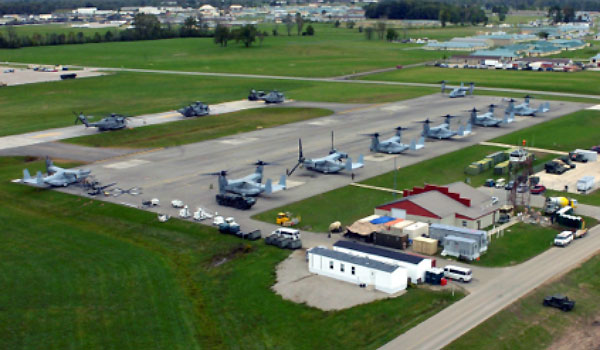
Figure 8: USMC HMS 464 training at Himsel AAF
Units and agencies supported at Himsel AAF include the Muscatatuck Urban Training Center (MUTC), Department of Homeland Security, State/local police, and other first responders with aviation and airspace training requirements.
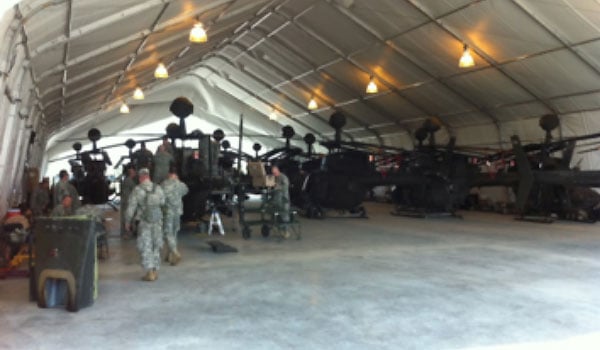
Figure 9: TNARNG training at Himsel AAF
Located in Long Beach CA at the Joint Forces Training Base is Los Alamitos Army Airfield, CAARNG. Los Alamitos AAF is the ARNG’s most robust airfield, and provides ATC Tower, Radar, Instrumented approaches, airfield management services support to tenant and transient units and aircrews.
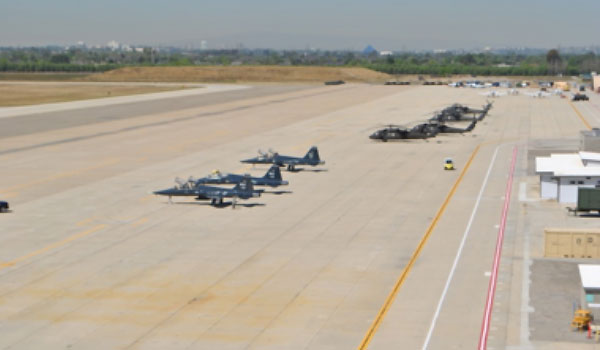
Figure 10: Los Alamitos AAF, CA
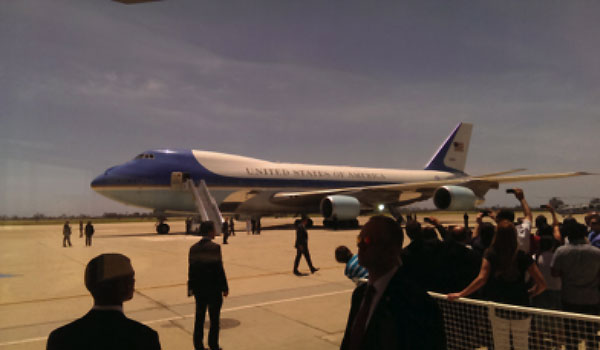
Figure 11: Air Force One and POTUS at Los Alamitos AAF

Figure 12: Marine One and POTUS at Los Alamitos AAF
Los Alamitos Army Airfield provides support to Military, Federal, State and City aviation training such as operational mission support, non-standard rotary wing flight/maneuver training, cross-country VFR/IFR operations, Presidential Flight Support (HMX-1), and heavy lift cargo operations (NASA/DOD), and return of KIA service- for members ISO OIF/OEF.
Dawson AAF, WV is an ARNG Training Site owned and managed by the WVARNG. The airfield provides realistic training opportunities for the West Virginia Army National Guard, Army National Guard units of other States, Army Reserve, Reserve Officers Training Corps, Army, and other Active and Reserve components of the Air Force, Navy, and Marine Corps.
The ARNG Professional Education Center (PEC) is located on Camp Robinson, AR, as well as Robinson AAF, the home one of ARNG AOB’s and to an Aviation Support Facility (AASF) providing centralized control, utilization, and maintenance support of Arkansas Army National Guard aviation assets.
Miller AAF (MAAF), Camp Ripley, MN is a mobilization Support Platform owned by the MNARNG. The airfield provides ATC Tower services to the aviation community as well as maintaining a sustainable aviation infrastructure with Class D airspace, supporting Joint Army/Air Force training and unit movements through Camp Ripley’s Training Center.
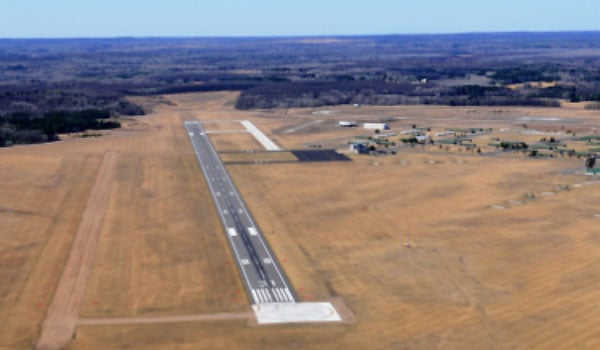
Figure 13: MAAF, Cp Ripley MN
MAAF has four IFR approaches (ILS, NDB, GPS), a Class A IFR runway, a 3500ft gravel assault strip, two UAS runways, and a UAS flight facility. Moreover, is capable of supporting C-130 aircraft training in all weather conditions, and provides day/night and NVG training support for UAS training operations.
The ATS facility at MAAF manages class D airspace, R-4301 flight operations, and manages a Tactical ATS CTO course throughout the year. Grayling AAF, Camp Grayling MI is the second of three Joint Military/Civilian use airfields belonging to the ARNG. Grayling AAF has Class D airspace, provides VFR/IFR ATC Tower services to the aviation community, as well as airfield management services. It is an instrument airfield (GPS, VOR, & NDB) with two 5000’ x 150’ runways adjacent to R4201A & B restricted airspace – a vast aviation playground. Grayling AAF has a COA capable of launching and recovering the RQ7B Shadow UAS for training in the restricted airspace. Grayling AAF has the capability to support C-130 & C-17 aircraft.
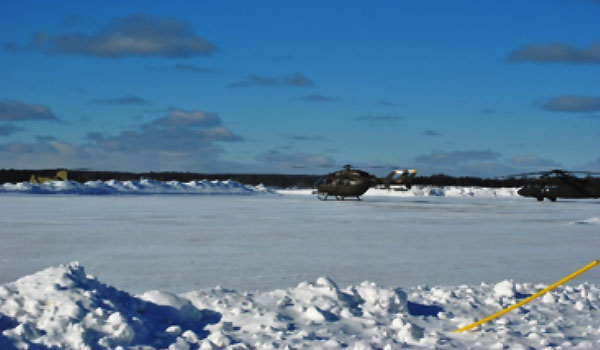
Figure 14: Camp Grayling, Grayling AAF, MI
The Army National Guard has two Aviation Training Sites – the Eastern Army National Guard Aviation Sites (EAATS) and the Western Army National Guard Aviation Training Site (WAATS), whose missions are to conduct Department of the Army, individual qualification training as well as professional development courses. All formal courses taught at EAATS and the WAATS are TRADOC approved, and the United States Army Aviation Center at Fort Rucker Alabama, provides certification, quality control, and standardization of training.
The EAATS is located on Ft Indiantown Gap PA, operated by the PAARNG, and supported by Muir AAF. The airfield provides ATC Tower and Flight Following service support to the 28th ID Aviation, and transient aircraft.
Located near Pinal Airpark at Silver Bell AHP is the second ARNG training site is the WAATS in Pinal County AZ. The WAATS is operated by the Arizona Army National Guard (AZARNG), for training students from all components of the U. S. Army, as well as several foreign countries. The WAATS is supported by a satellite heliport, Picacho Stage Field, which provides ATC Tower services to the rotary wing training mission of the WAATS, 1/285th Avn Bde, and Peace Vanguard (Singapore Air Force).
In additional to airfields, the ARNG has several stand alone Heliports such as Papago AHP (AZARNG). Papago AHP is located on the Papago Park Military Reservation along with Arizona’s Department of Emergency and Military Affairs (DEMA), and the 2-285th Assault Helicopter Battalion. The facility supports the training of 160 aviation crew members in air assault, air movement, and medical evacuation missions.
Weide AHP, MD a Stand Alone AHP managed by the MDARNG. Weide AHP provides emergency support to the USN, USAF, USMC, State Police, CBRNE Analytical and Remediation Activity, DSCA, Homeland defense, and other agency missions.
Martindale Army Heliport (MAHP), a Stand Alone Heliport, is located in San Antonio TX and managed by the Texas Army National Guard (TXARNG). MAHP provides aviation support to the U.S. Army Medical Department Center and School located at Ft. Sam Houston (FSH) by providing MEDEVAC cold-load and 9-line scenario training for all enlisted soldiers and officers attending AIT or BOLC at FSH.
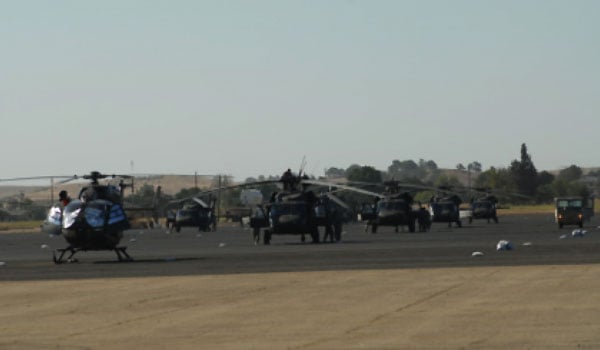
Figure 17: Camp Roberts AHP

Figure16: Cessna Emergency Landing at Muldrow AHP
Muldrow Army Heliport (MAHP), OK (OKARNG) is the only IFR capable heliport in the ARNG. This Stand Alone Heliport supports Customs and Border patrol helicopter training, and is the primary training facility for 12 aircraft, and the 1-245th Airfield Operations Battalion who routinely integrates their ATC training and certification requirements into flight operations conducted at the heliport. MAHP has a 2000 foot Autorotation Lane and the heliport’s infrastructure is designed to support a variety of training requirements. On one occasion, it was “selected” as an emergency landing site…
Camp Roberts (CAARNG) is located in San Luis Obispo and Monterey Counties, the camp is utilized to facilitate the training, mobilization, and security of ARNG, USAR, and Active Component units in support of Federal, State, and community missions. A newly constructed C-130 assault strip, a UAS runway, and very large Heliport – capable of accommodating an aviation Brigade size element – are all utilized to support training, proficiency, and testing. In addition Camp Roberts has a brand new TUAS facility/SHADOW company, as well as the newest Tactical ATC unit in the ARNG.
Camp Roberts Range Complex supports the CAARNG Force Structure training requirements throughout the year while concurrently supporting the training and validation of mobilizing Army National Guard units from around the region. The Training Center supports all other Military units within the Region to include Research and Development (R&D) agencies associated with the Department of Defense.
In addition to ARNG and Reserve component Units training at Camp Roberts, the USAF, USMC, USN, 47 Royal Artillery Regiment UAV- British Foreign Military, R&D tenant entities such as the Naval Postgraduate School’s (NPS) Center for Interdisciplinary Remotely-Piloted Aircraft Studies (CIRPAS) regularly conduct training at the reservation.
Camp Roberts recently added an Airspace Information Center to manage its complex and vastly increasing aircraft traffic, and to provide a training and certification facility for tactical ATC units and personnel of all services.
Located at Camp Guernsey, WY, Guernsey AAF (GAAF) is the third of three ARNG Joint Use Military/Civilian Airfields, which is managed by the Wyoming Army National Guard (WYARNG). The airfield provides comprehensive aviation support to all aviation customers through its Class D airspace, and provides ATC Tower and Flight Following Services to the military aviation community.
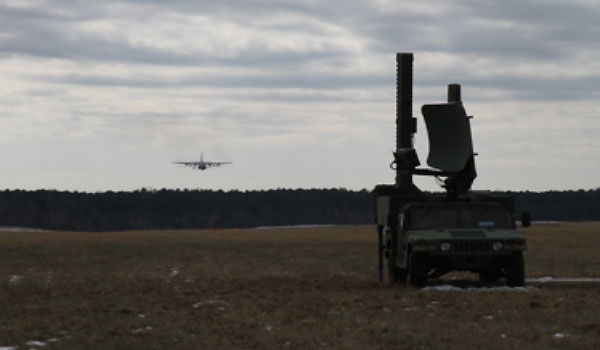
Figure 5: C-17 landing at Guernsey AAF, WY
GAAF’s unique location makes it ideal to conduct specialized ground and air training requirements by all branches of service, other government agencies, and local organizations. Capable of landing C-17 aircraft, the airfield and the installation provides support for 18 USAF flying units, 13 Army Aviation units, 8 USMC flying units, 5 flying OGAs (Other Government Agencies), and have also supported many ground units to include elite forces and air drop missions. Within the restricted (R-7001) training area is a 4,728’ tactical landing strip which meets the minimum standard for C-130 operation.
Camp Shelby, MS Joint Forces Training Center (CSJFTC) has multiple training areas and ranges that support aviation operations, rotary wing aircraft, UAS operations, and C-17 Assault training. As the Nation’s largest National Guard Training Center, CSJFTC has vast training and maneuver space including a 3,500 foot C-17 Tactical Assault Strip, several MOAs, the 340 square kilometer restricted area (R4401) encompasses a Multipurpose Range Complex, and the MPRC supports Table VIII door gunnery qualification for cargo and utility helicopters.
The ARNG TUAS Regional Training Center is located at Hagler AAF. Several launch and recovery locations are established within the restricted training areas to supported Shadow UAS platoon NET for seven units. Additionally, CSJFTC is capable of supporting manned – unmanned teaming between tenant Shadow Platoon and any attack/reconnaissance aircraft.
Due to the high volume of C-17, C-130, Fighter and UAS traffic, a permanent Airspace Information (AIC) is in development to manage and implement Airspace and Aviation Procedural Control, as well as mitigate and de-conflict Range Control ground and aviation operations. The AIC will also serve as a training and certification facility, providing training opportunities for ARNG controllers.










